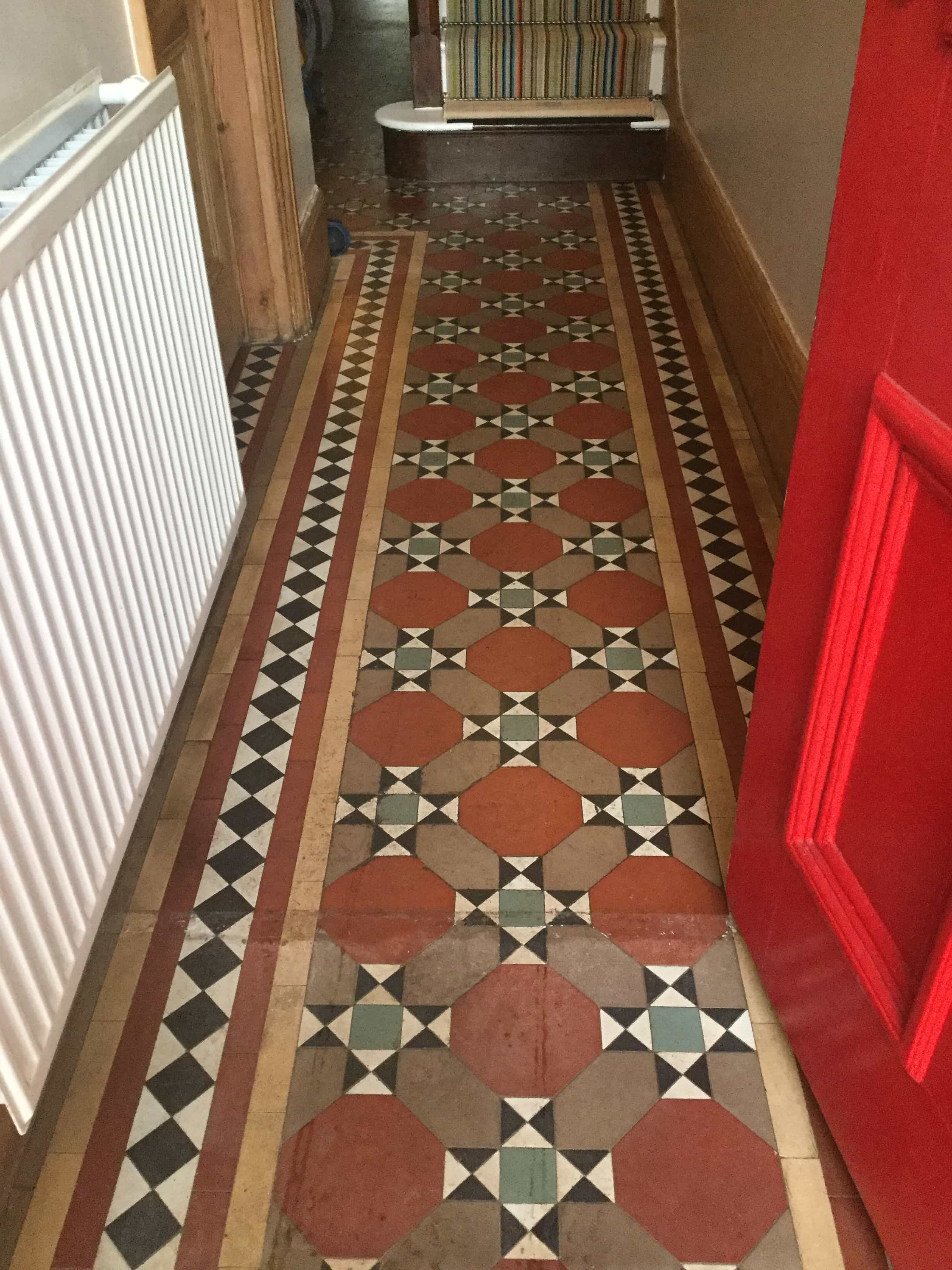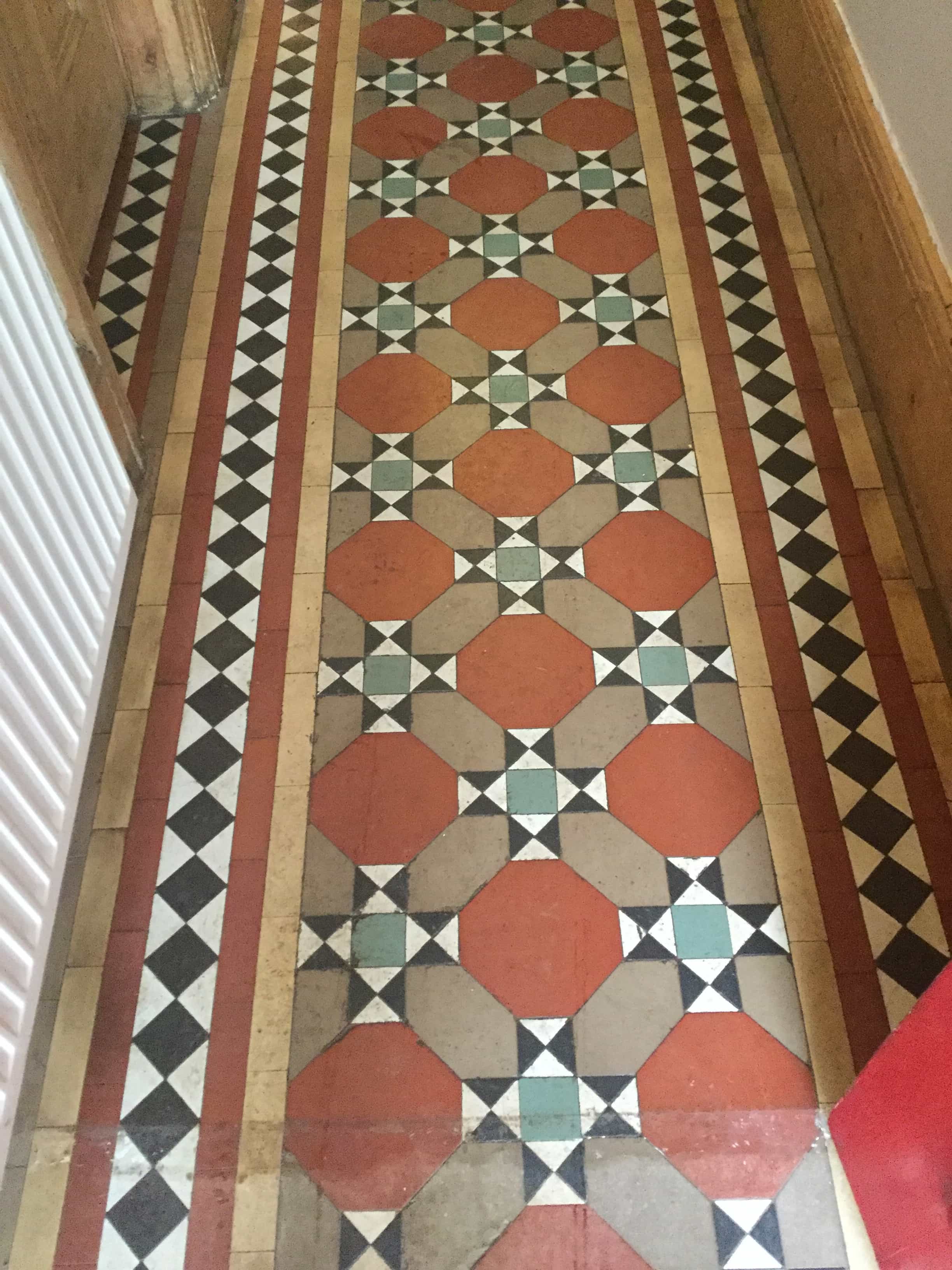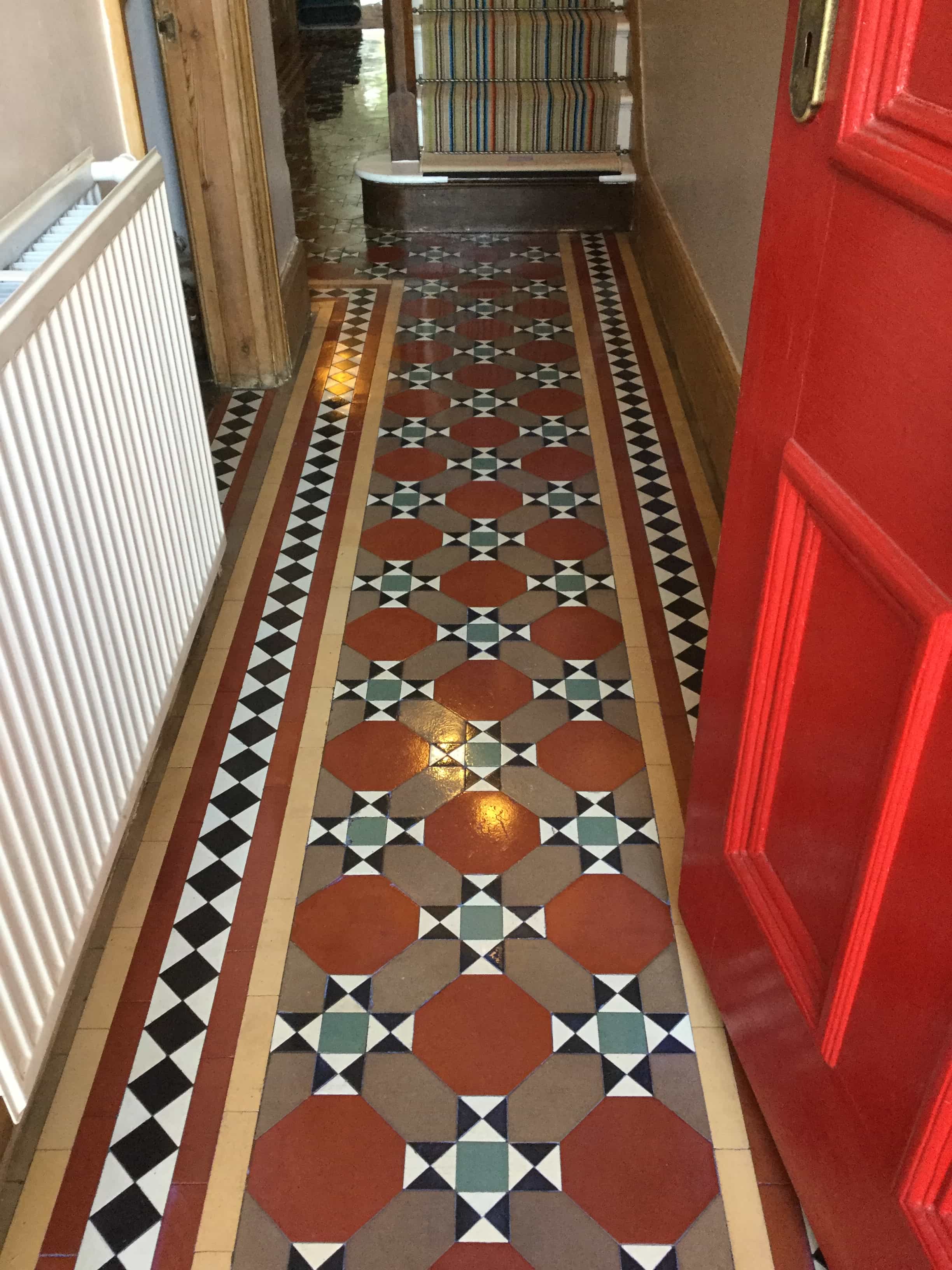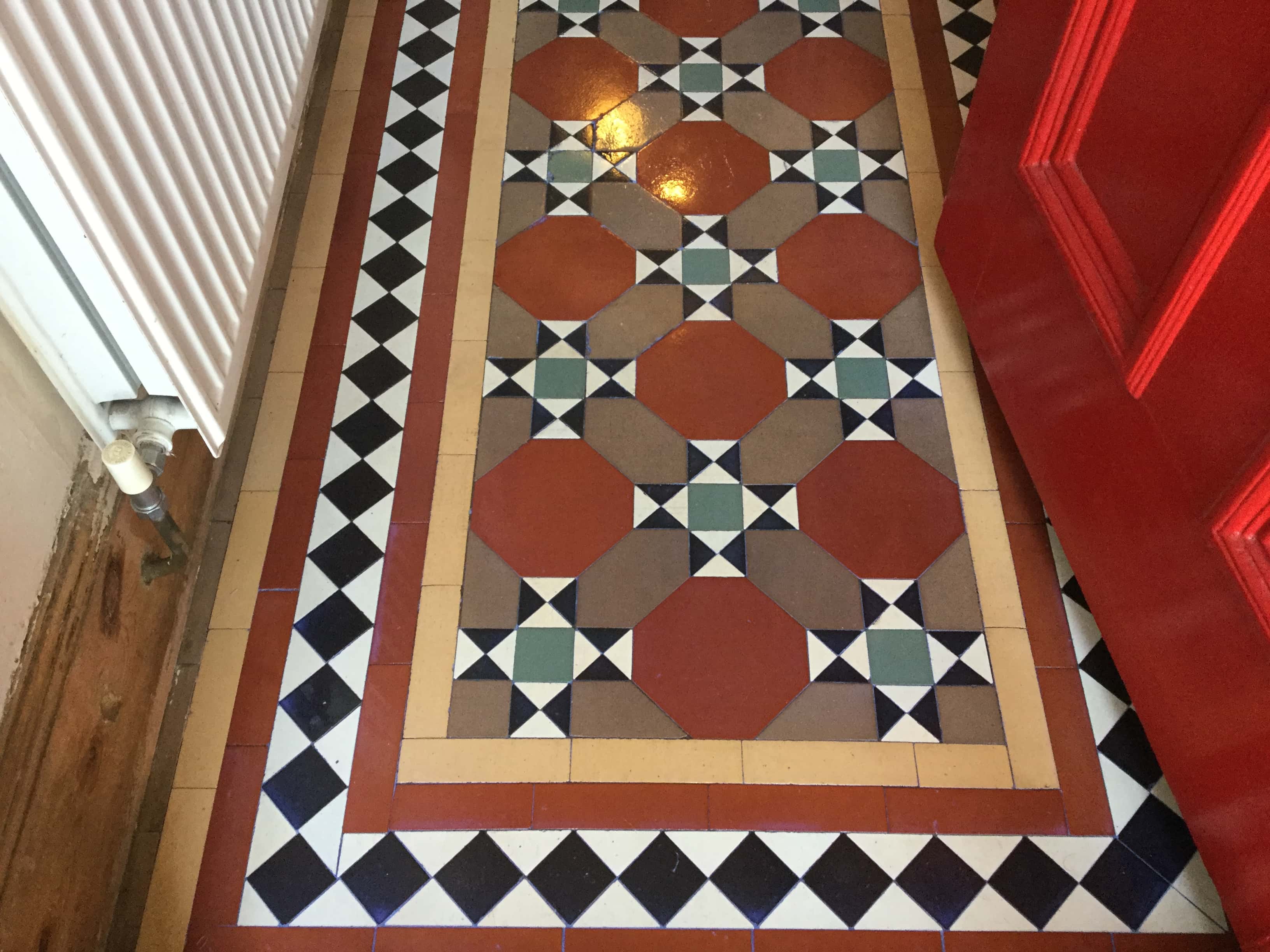
The floor was in good condition for its age but had experienced problems with broken and loose tiles around two of the door thresholds which is a common problem with floors of this age. Unfortunately, those tiles had been lost over the years and now the customer wanted this part of the floor rebuilding as part of the restoration. Fortunately, these tiles are still popular so finding suitable replacements wasn’t a big of a challenge as you might think.
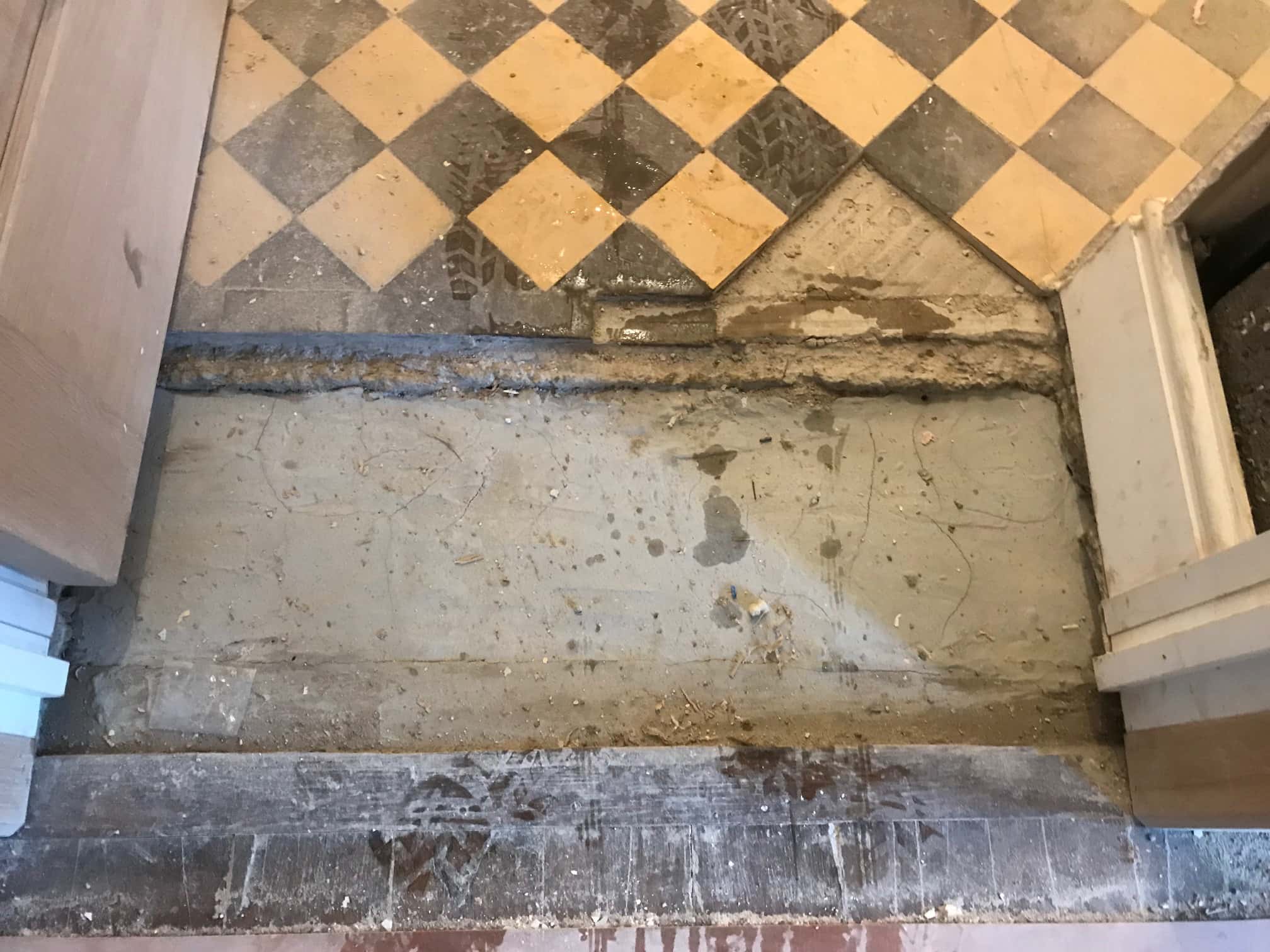
I discussed with the client what needed to be done and after finding a suitable supplier for the replacement tiles was able to produce a quote which was accepted, and we agreed a price for the work.
Repairing a Cream and Black Victorian Hallway Floor
My first task was to rebuild the areas of broken and missing tiles. For the larger areas I mapped out a suitable pattern and set about cutting the replacement tiles to fit. A thick bed of flexible rapid set floor adhesive was applied to the floor and the replacement tiles bedded into the old cement base. Once the adhesive had hardened the tiles were grouted, cleaned-up and left to dry.
There were several areas that needed this treatment, so the work took some time to complete.

Cleaning/Repairing a Victorian Tiled Hallway Floor
Returning the next day, I first checked that the replacement tiles had set and that there were no further problems that needed addressing. All was well so I began cleaning the floor using a 200-grit followed by a 400-grit Diamond pad fitted to a weighted buffing machine running at slow speed and lubricated with water. The floor was rinsed with water after each pad and then the soil extracted using a wet vacuum.The floor was then given an acid wash using Tile Doctor Grout Clean-Up, which at this stage acts in two ways for these old floors:
1. The Tile Doctor Grout Clean-Up product is made from Phosphoric Acid (not a brick Acid, which is a lot cheaper, more widely available but too strong for use on tile.) The acid we use works with us not against us and gives us time to change the pH of the floor to a slightly acidic pH. This is important on old floors like these where no damp proof membrane has been installed and it’s important to counter any alkaline salts in the floor which could lead to efflorescence later.
2. The sealer will bond to the surface a lot better when it has had this treatment and as a result you get a sharper cleaner finish.
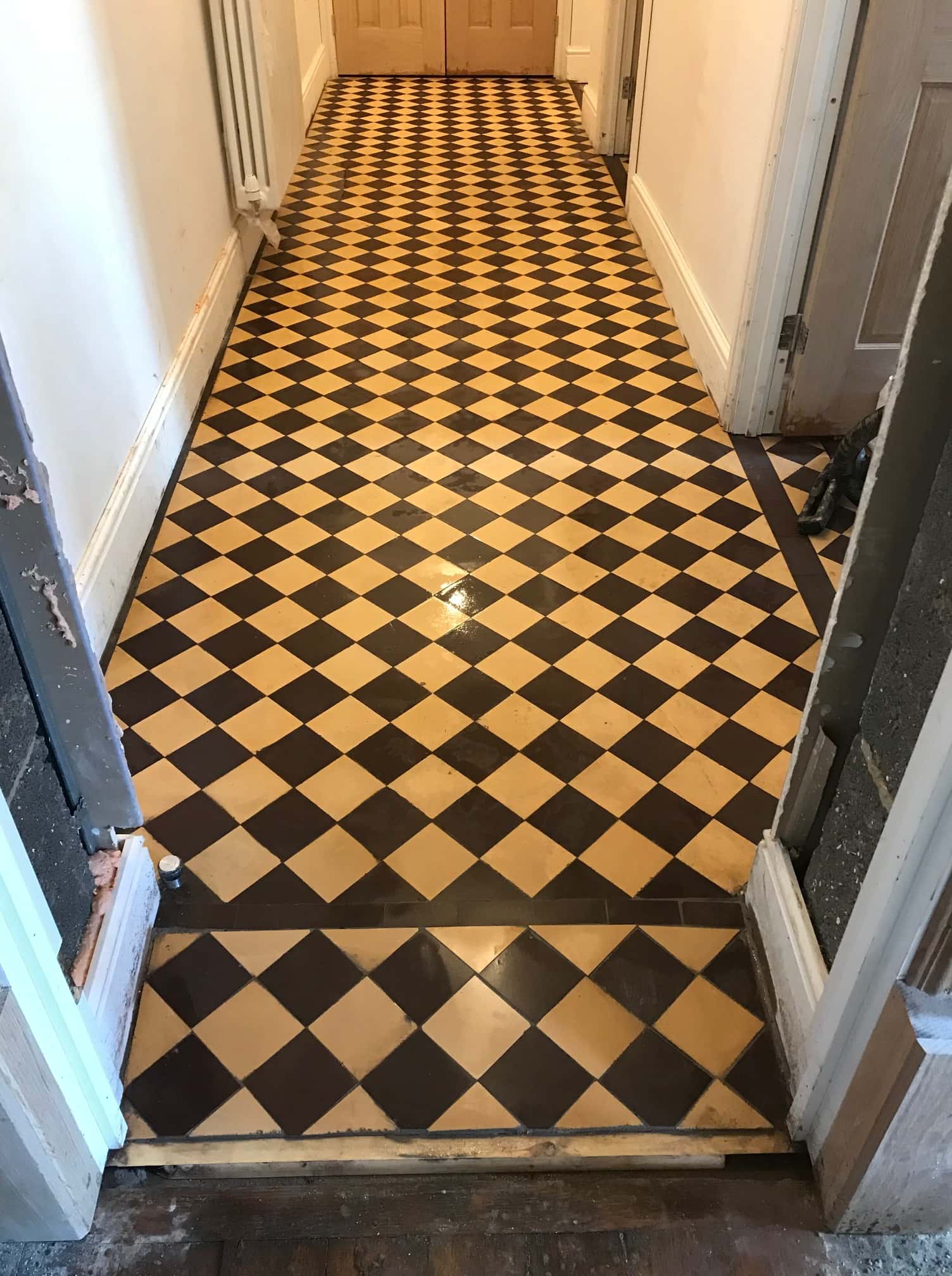
Once done the floor was given another rinse and extraction with water and the wet vacuum and then left to dry out for a few days,
Sealing a Victorian Tiled Hallway Floor
We returned as promised to seal the whole floor using a couple of coats of a breathable colour enhancing sealer called Tile Doctor Colour Grow. As you can see form the pictures this really brought the hallway floor to life. Colour Grow works from the inside by occupying the pores in the tile and will protect it from ingrained dirt staining going forward.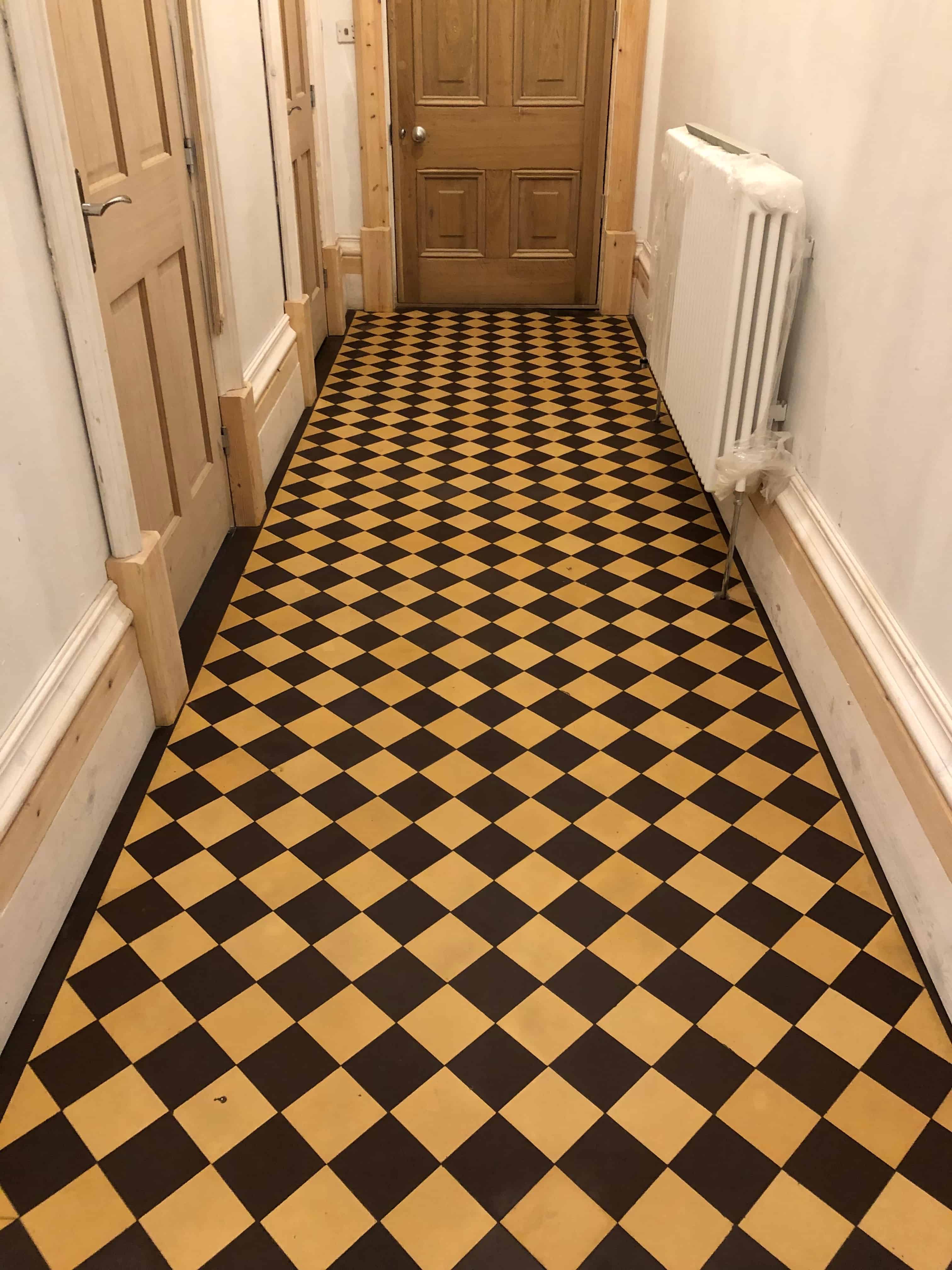
It’s very important for a customer to use the correct cleaner after having there tiles cleaned and sealed professionally as using the wrong product can prematurely degrade the sealer. As a result, we recommend Tile Doctor Concentrated Neutral Tile Cleaner, its pH balanced and will not upset the sealer, thus getting maximum longevity out of the whole process.

Source: Victorian Tile Cleaning, Restoration and Sealing Service in South Cumbria
